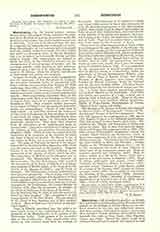

Hierotheus. —All attempts to establish as historical a personality corresponding to the Hierotheus who appears in the writings of Pseudo-Dionysius are rendered abortive by the fact, now definitively proven, that those writings, with intent to mislead, weave into their narrative various fictitious personalities of the Apostolic Era, such as Peter, James, John, Timothy, Carpus, and others. Indeed the author would have betrayed himself had he named and depicted in such sharp outlines a real Hierotheus who lived in his own time (the end of the fifth century), and with whom he was on intimate terms. As a matter of fact, no trace of any Hierotheus resembling the portrait drawn by Dionysius can be found outside the writings of Dionysius. For want of extraneous sources, therefore, we must turn to three important passages in the work “De divinis nominibus”, wherein Dionysius speaks of Hierotheus as his teacher and guide, with expressions of deepest veneration, adding that after St. Paul it is to him he is most indebted. One passage in the “D3 div. nom.” (iii, 2-3), taken in connection with ii, 9-10, and iv, 15-17, gives the following descriptive details. Hierotheus is a gifted teacher for people of mature and high intelligence; he possesses a sublime knowledge of Divine things, the result, not merely of his natural keenness and zealous study, but, for the most part, of mystical insight and contemplation. Hence his method of teaching is full of profound meaning, terse, and concise. His hearers hardly dare to meet with their gaze the beams of this intellectual sun. The writings of Hierotheus are almost as authoritative as the inspired books of the Bible. Two of his works bear the title (quite foreign to the Apostolic Era) “Outlines of Theology” (Theologikai stoicheioseis) and “Hymns of Love” (erotikoi umnoi). An excerpt of twenty-seven lines from the former work, given in Migne, P.G., III, 648, describes the saving and guiding power of the Logos (Theotes Iesou), in strong sympathy with the doctrines of Clement of Alexandria and Origen concerning the Logos. As though to “crown” his own disquisitions on love (eros), Dionysius appends three brief quotations from the second work of Hierotheus. They treat of the definition of love and of the gradations of the powers of love (erotes) and their reduction to the one supreme principle of love. Neo-Platonic ideas, taken for instance from Proclus (ed. Cousin, 1864; cf. “Instit. theol.”, passim; “I Aleib.”, p. 325; “Theol. Plat.”, p. 132) and others, appear throughout and merge with other thoughts developed by Dionysius himself. There is, therefore, a strong presumption that the aforesaid two works did not exist at all, and that their alleged author, Hierotheus, is identical with Dionysius.
A remarkable episode from the life of Hierotheus, which is related in “De div. nom.”, iii, 2 shows us Hierotheus, with the Apostles Peter and James and “many blessed brethren,” gathered around the sacred body of the Mother of God, on which occasion he, kindled with supernatural inspiration, delivered a discourse whose ecstatic glow filled all with wonder. Dionysius also pretends to have been present at this “viewing of the God-bearing body” (Thea Theodochou somatos), which is described on the authority of the apocryphal accounts, “De transitu (dormitione) B. V. Mariae”. There is not the slightest tangible proof as to whether the author of the Dionysian writings borrowed at least a few characteristics from some member of his circle of friends, nor to what extent he did so; it is not worth while going into the manifold unfounded hypotheses as that, for instance, respecting; Stephen Bar-Sudaili. (See Dionysius the Pseudo-Areopagite).
JOS. STIGLMAYR

